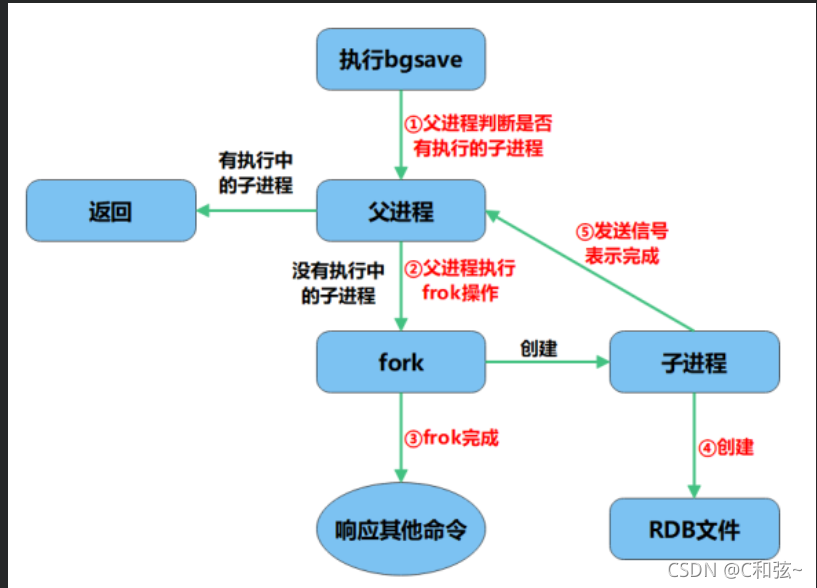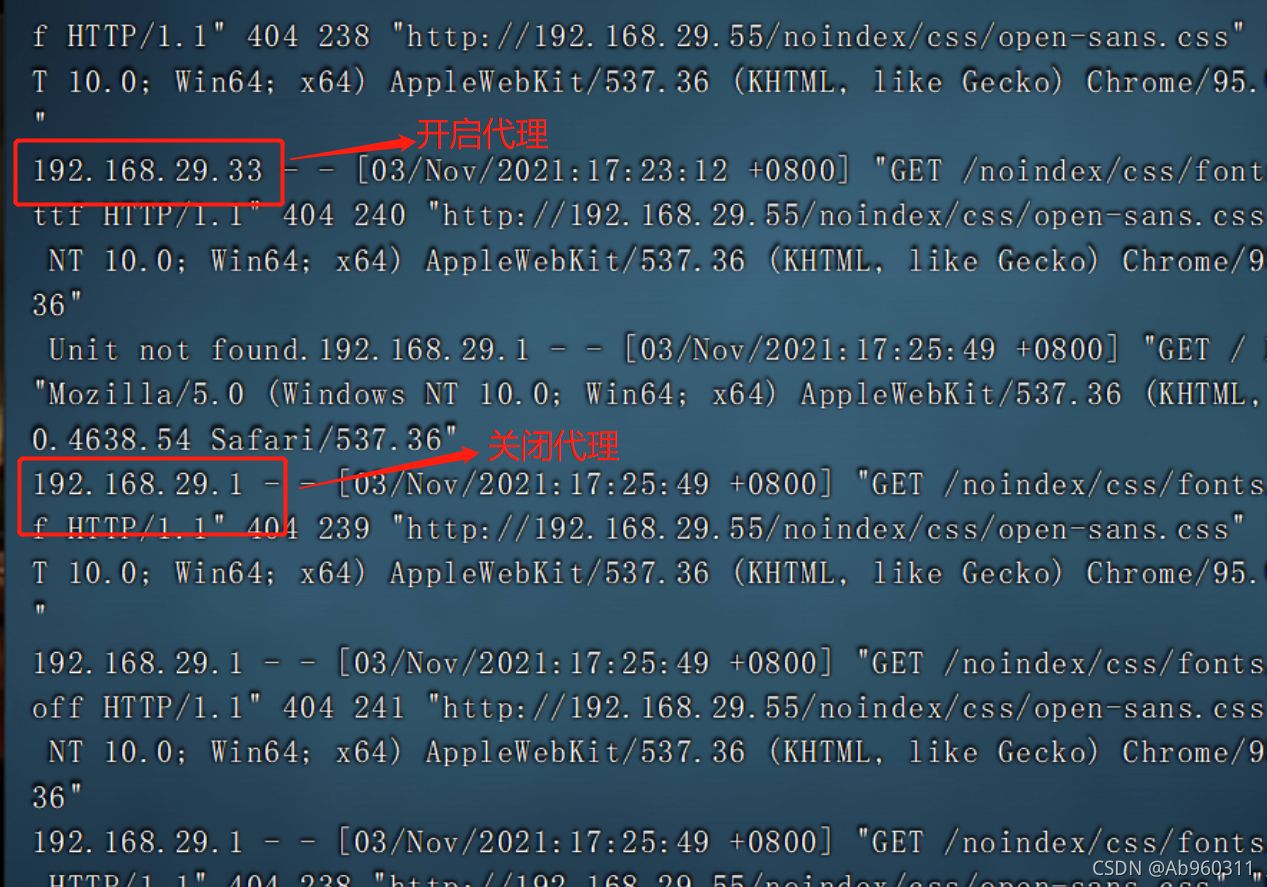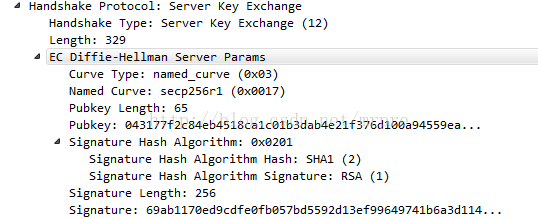当前位置:网站首页>kprobe 的 3 种使用
kprobe 的 3 种使用
2022-04-23 14:11:00 【Mrpre】
- 知识背景:会编写基础内核模块
- kprobe用处:用来跟踪、记录、打桩。最常见的使用就是需要打印内核函数的执行流程,比如排查问题时、或者学习内核流程时需要用到。
- 准备工作:找一份和自己linux系统相同版本的源码(方法自行Google,ubuntu、centos、redhat各自有各自方法)
内核模块跟踪指定函数
官方文档:
https://www.kernel.org/doc/Documentation/kprobes.txt
在 内核源码目录samples/kprobes/有几个kprobe模块例子,这里直接贴出代码方便没有内核源码的同学学习
/* * NOTE: This example is works on x86 and powerpc. * Here's a sample kernel module showing the use of kprobes to dump a * stack trace and selected registers when _do_fork() is called. * * For more information on theory of operation of kprobes, see * Documentation/kprobes.txt * * You will see the trace data in /var/log/messages and on the console * whenever _do_fork() is invoked to create a new process. */
#include <linux/kernel.h>
#include <linux/module.h>
#include <linux/kprobes.h>
#define MAX_SYMBOL_LEN 64
static char symbol[MAX_SYMBOL_LEN] = "_do_fork";
module_param_string(symbol, symbol, sizeof(symbol), 0644);
/* For each probe you need to allocate a kprobe structure */
static struct kprobe kp = {
.symbol_name = symbol,
};
/* kprobe pre_handler: called just before the probed instruction is executed */
static int handler_pre(struct kprobe *p, struct pt_regs *regs)
{
#ifdef CONFIG_X86
pr_info("<%s> pre_handler: p->addr = 0x%p, ip = %lx, flags = 0x%lx\n",
p->symbol_name, p->addr, regs->ip, regs->flags);
#endif
#ifdef CONFIG_PPC
pr_info("<%s> pre_handler: p->addr = 0x%p, nip = 0x%lx, msr = 0x%lx\n",
p->symbol_name, p->addr, regs->nip, regs->msr);
#endif
#ifdef CONFIG_MIPS
pr_info("<%s> pre_handler: p->addr = 0x%p, epc = 0x%lx, status = 0x%lx\n",
p->symbol_name, p->addr, regs->cp0_epc, regs->cp0_status);
#endif
#ifdef CONFIG_TILEGX
pr_info("<%s> pre_handler: p->addr = 0x%p, pc = 0x%lx, ex1 = 0x%lx\n",
p->symbol_name, p->addr, regs->pc, regs->ex1);
#endif
#ifdef CONFIG_ARM64
pr_info("<%s> pre_handler: p->addr = 0x%p, pc = 0x%lx,"
" pstate = 0x%lx\n",
p->symbol_name, p->addr, (long)regs->pc, (long)regs->pstate);
#endif
#ifdef CONFIG_S390
pr_info("<%s> pre_handler: p->addr, 0x%p, ip = 0x%lx, flags = 0x%lx\n",
p->symbol_name, p->addr, regs->psw.addr, regs->flags);
#endif
/* A dump_stack() here will give a stack backtrace */
return 0;
}
/* kprobe post_handler: called after the probed instruction is executed */
static void handler_post(struct kprobe *p, struct pt_regs *regs,
unsigned long flags)
{
#ifdef CONFIG_X86
pr_info("<%s> post_handler: p->addr = 0x%p, flags = 0x%lx\n",
p->symbol_name, p->addr, regs->flags);
#endif
#ifdef CONFIG_PPC
pr_info("<%s> post_handler: p->addr = 0x%p, msr = 0x%lx\n",
p->symbol_name, p->addr, regs->msr);
#endif
#ifdef CONFIG_MIPS
pr_info("<%s> post_handler: p->addr = 0x%p, status = 0x%lx\n",
p->symbol_name, p->addr, regs->cp0_status);
#endif
#ifdef CONFIG_TILEGX
pr_info("<%s> post_handler: p->addr = 0x%p, ex1 = 0x%lx\n",
p->symbol_name, p->addr, regs->ex1);
#endif
#ifdef CONFIG_ARM64
pr_info("<%s> post_handler: p->addr = 0x%p, pstate = 0x%lx\n",
p->symbol_name, p->addr, (long)regs->pstate);
#endif
#ifdef CONFIG_S390
pr_info("<%s> pre_handler: p->addr, 0x%p, flags = 0x%lx\n",
p->symbol_name, p->addr, regs->flags);
#endif
}
/* * fault_handler: this is called if an exception is generated for any * instruction within the pre- or post-handler, or when Kprobes * single-steps the probed instruction. */
static int handler_fault(struct kprobe *p, struct pt_regs *regs, int trapnr)
{
pr_info("fault_handler: p->addr = 0x%p, trap #%dn", p->addr, trapnr);
/* Return 0 because we don't handle the fault. */
return 0;
}
static int __init kprobe_init(void)
{
int ret;
kp.pre_handler = handler_pre;
kp.post_handler = handler_post;
kp.fault_handler = handler_fault;
ret = register_kprobe(&kp);
if (ret < 0) {
pr_err("register_kprobe failed, returned %d\n", ret);
return ret;
}
pr_info("Planted kprobe at %p\n", kp.addr);
return 0;
}
static void __exit kprobe_exit(void)
{
unregister_kprobe(&kp);
pr_info("kprobe at %p unregistered\n", kp.addr);
}
module_init(kprobe_init)
module_exit(kprobe_exit)
MODULE_LICENSE("GPL");
这个sample非常简单,创建内核模块,内核模块初始化时注册kprobe,即就是当内核执行_do_fork时,执行我们注册的函数handler_pre和handler_post,这2个函数顾名思义,就是指的地址(这里是_do_fork起始地址)运行前后分别会运行这个2个handler。我们来编译一下这个模块,下面是Makefile,假设 我们上面源码是kprobe_example.c,则Makefile编写如下:
obj-m := kprobe_example.o
KDIR := /lib/modules/$(shell uname -r)/build
PWD := $(shell pwd)
default:
$(MAKE) -C $(KDIR) SUBDIRS=$(PWD) modules
clean:
rm -f *.mod.c *.ko *.o
我们make一下,生成了kprobe_example.ko。执行 insmod kprobe_example.ko加载模块。我们dmesg 看下
[338010.070981] Planted kprobe at 000000005cca734c
[338010.073901] <_do_fork> pre_handler: p->addr = 0x000000005cca734c, ip = ffffffff81e8efc1, flags = 0x246
[338010.073903] <_do_fork> post_handler: p->addr = 0x000000005cca734c, flags = 0x246
[338010.123244] <_do_fork> pre_handler: p->addr = 0x000000005cca734c, ip = ffffffff81e8efc1, flags = 0x246
[338010.123246] <_do_fork> post_handler: p->addr = 0x000000005cca734c, flags = 0x246
[338011.223298] <_do_fork> pre_handler: p->addr = 0x000000005cca734c, ip = ffffffff81e8efc1, flags = 0x246
[338011.223300] <_do_fork> post_handler: p->addr = 0x000000005cca734c, flags = 0x246
[338011.260685] <_do_fork> pre_handler: p->addr = 0x000000005cca734c, ip = ffffffff81e8efc1, flags = 0x246
[338011.260686] <_do_fork> post_handler: p->addr = 0x000000005cca734c, flags = 0x246
[338012.323273] <_do_fork> pre_handler: p->addr = 0x000000005cca734c, ip = ffffffff81e8efc1, flags = 0x246
[338012.323274] <_do_fork> post_handler: p->addr = 0x000000005cca734c, flags = 0x246
[338012.564192] <_do_fork> pre_handler: p->addr = 0x000000005cca734c, ip = ffffffff81e8efc1, flags = 0x246
[338012.564193] <_do_fork> post_handler: p->addr = 0x000000005cca734c, flags = 0x246
[338013.628269] <_do_fork> pre_handler: p->addr = 0x000000005cca734c, ip = ffffffff81e8efc1, flags = 0x246
[338013.628270] <_do_fork> post_handler: p->addr = 0x000000005cca734c, flags = 0x246
[338013.737859] <_do_fork> pre_handler: p->addr = 0x000000005cca734c, ip = ffffffff81e8efc1, flags = 0x246
[338013.737860] <_do_fork> post_handler: p->addr = 0x000000005cca734c, flags = 0x246
[338014.755413] <_do_fork> pre_handler: p->addr = 0x000000005cca734c, ip = ffffffff81e8efc1, flags = 0x246
[338014.755414] <_do_fork> post_handler: p->addr = 0x000000005cca734c, flags = 0x246
因为系统基本上都在创建新的进程(至少当你敲 dmesg时也是一次进程的创建),所以很快 dmesg 就会有一堆信息。
内核模块跟踪指定位置
知识背景:需要反汇编能力,至少给一份汇编和源码让你阅读,你能将两者对的上。
通常,我们希望在函数执行的过程中变量,即打印一些流程中的东西,而不是函数本身被调用,此时我们不能简单设置 kprobe->symbol_name 函数名字 ,假设我们期望获取 _do_fork函数变量 nr 的值:
long _do_fork(struct kernel_clone_args *args)
{
u64 clone_flags = args->flags;
struct completion vfork;
struct pid *pid;
struct task_struct *p;
int trace = 0;
long nr;
/* * Determine whether and which event to report to ptracer. When * called from kernel_thread or CLONE_UNTRACED is explicitly * requested, no event is reported; otherwise, report if the event * for the type of forking is enabled. */
if (!(clone_flags & CLONE_UNTRACED)) {
if (clone_flags & CLONE_VFORK)
trace = PTRACE_EVENT_VFORK;
else if (args->exit_signal != SIGCHLD)
trace = PTRACE_EVENT_CLONE;
else
trace = PTRACE_EVENT_FORK;
if (likely(!ptrace_event_enabled(current, trace)))
trace = 0;
}
p = copy_process(NULL, trace, NUMA_NO_NODE, args);
...
pid = get_task_pid(p, PIDTYPE_PID);
nr = pid_vnr(pid);
我们要做的时,找到 nr = pid_vnr(pid);对应的汇编函数的地址,然后将krprobe设置为这个地址。
先查看 _do_fork在内核的地址
root@iZ0jl6ke2x86d5zhr5tafbZ:~# cat /boot/System.map-4.15.0-91-generic | grep "_do_fork"
ffffffff8108efc0 T _do_fork
发现地址是 ffffffff8108efc0,然后查看 地址在 ffffffff8108efc0的汇编,即找到_do_fork函数对应的汇编,此时需要反汇编内核镜像。
我测试的ubuntu,内核镜像位于/boot/vmlinuz-4.15.0-91-generic,但是vmlinuz是压缩文件,需要使用内核源码自带的工具(extract-vmlinux)将其进行解压,解压成vmlinux,我的环境执行
scripts/extract-vmlinux /boot/vmlinuz-4.15.0-91-generic > ./vmlinux,其中 extract-vmlinux就是linux源码自带的工具,我们使用他来解压vmlinuz生成vmlinux,然后 执行objdump -D vmlinux | grep "ffffffff8108efc0"反汇编内核二进制找到函数对应的汇编。
nr 变量 是 函数pid_vnr的返回值(也是子进程的pid) ,根据x64调用规范,调用完成pid_vnr()后,寄存器rax存放的就是其函数返回值,所以,只要将kprobe的点设置为ffffffff8108f0cc,然后获取 rax,就能获取变量nr的值。
反汇编能力就是多看汇编以及找到几个关键点(例如常量)就能定位到汇编对应的源码了,这里不再展开了
root@iZ0jl6ke2x86d5zhr5tafbZ:~# cat ./vmlinux.out | grep "ffffffff8108efc0:" -A 130
ffffffff8108efc0: e8 0b 2d 97 00 callq 0xffffffff81a01cd0
ffffffff8108efc5: 55 push %rbp
ffffffff8108efc6: 48 89 e5 mov %rsp,%rbp
ffffffff8108efc9: 41 57 push %r15
ffffffff8108efcb: 41 56 push %r14
ffffffff8108efcd: 41 55 push %r13
ffffffff8108efcf: 41 54 push %r12
ffffffff8108efd1: 45 31 ed xor %r13d,%r13d
ffffffff8108efd4: 53 push %rbx
ffffffff8108efd5: 49 89 ff mov %rdi,%r15
ffffffff8108efd8: 48 83 ec 50 sub $0x50,%rsp
ffffffff8108efdc: 48 89 4d a0 mov %rcx,-0x60(%rbp)
ffffffff8108efe0: 4c 89 c1 mov %r8,%rcx
ffffffff8108efe3: 65 48 8b 04 25 28 00 mov %gs:0x28,%rax
ffffffff8108efea: 00 00
ffffffff8108efec: 48 89 45 d0 mov %rax,-0x30(%rbp)
ffffffff8108eff0: 31 c0 xor %eax,%eax
ffffffff8108eff2: f7 c7 00 00 80 00 test $0x800000,%edi #if (!(clone_flags & CLONE_UNTRACED)) {
ffffffff8108eff8: 75 2c jne 0x ffffffff8108f026
ffffffff8108effa: f7 c7 00 40 00 00 test $0x4000,%edi # if (clone_flags & CLONE_VFORK) {
ffffffff8108f000: 0f 84 3d 01 00 00 je 0xffffffff8108f143
ffffffff8108f006: b8 20 00 00 00 mov $0x20,%eax
....... 省略部分
ffffffff8108f08d: 6a ff pushq $0xffffffffffffffff
ffffffff8108f08f: 41 51 push %r9
ffffffff8108f091: 45 31 c0 xor %r8d,%r8d
ffffffff8108f094: 45 89 e9 mov %r13d,%r9d
ffffffff8108f097: 4c 89 ff mov %r15,%rdi
ffffffff8108f09a: e8 91 e2 ff ff callq 0xffffffff8108d330 copy_process
ffffffff8108f09f: 49 89 c4 mov %rax,%r12
ffffffff8108f0a2: 49 81 fc 00 f0 ff ff cmp $0xfffffffffffff000,%r12
ffffffff8108f0a9: 58 pop %rax
ffffffff8108f0aa: 5a pop %rdx
ffffffff8108f0ab: 0f 87 f9 02 00 00 ja 0xffffffff8108f3aa
ffffffff8108f0b1: 65 48 8b 1c 25 00 5c mov %gs:0x15c00,%rbx
ffffffff8108f0b8: 01 00
ffffffff8108f0ba: 0f 1f 44 00 00 nopl 0x0(%rax,%rax,1)
ffffffff8108f0bf: 31 f6 xor %esi,%esi
ffffffff8108f0c1: 4c 89 e7 mov %r12,%rdi
ffffffff8108f0c4: e8 37 07 02 00 callq 0xffffffff810af800 get_task_pid
ffffffff8108f0c9: 48 89 c7 mov %rax,%rdi
ffffffff8108f0cc: 49 89 c6 mov %rax,%r14
ffffffff8108f0cf: e8 cc 07 02 00 callq 0xffffffff810af8a0 pid_vnr
ffffffff8108f0d4: 41 f7 c7 00 00 10 00 test $0x100000,%r15d
ffffffff8108f0db: 48 63 d8 movslq %eax,%rbx
然后将第一节的源码进行部分修改,见下面代码片段,0x11B 是 kprobe点 ffffffff8108f0db 相对于函数起始位置的偏移( ffffffff8108f0db - ffffffff8108efc0 )
regs保存的是 kprobe断点时寄存器的值,这里打印 regs->ax 即能得到 nr 值。
...
static struct kprobe kp = {
.symbol_name = symbol,
.offset = 0x11B,
};
/* kprobe pre_handler: called just before the probed instruction is executed */
static int handler_pre(struct kprobe *p, struct pt_regs *regs)
{
#ifdef CONFIG_X86
pr_info("name:%s <%s> pre_handler: p->addr = 0x%p, ip = %lx, flags = 0x%lx rax %ld\n",
current->comm,p->symbol_name, p->addr, regs->ip, regs->flags, regs->ax);
#endif
return 0;
}
...
内核模块获取内核函数返回值
在内核目录下,samples/kprobes/kretprobe_example.c,他专门用于获取内核函数返回值
/* * kretprobe_example.c * * Here's a sample kernel module showing the use of return probes to * report the return value and total time taken for probed function * to run. * * usage: insmod kretprobe_example.ko func=<func_name> * * If no func_name is specified, _do_fork is instrumented * * For more information on theory of operation of kretprobes, see * Documentation/kprobes.txt * * Build and insert the kernel module as done in the kprobe example. * You will see the trace data in /var/log/messages and on the console * whenever the probed function returns. (Some messages may be suppressed * if syslogd is configured to eliminate duplicate messages.) */
#include <linux/kernel.h>
#include <linux/module.h>
#include <linux/kprobes.h>
#include <linux/ktime.h>
#include <linux/limits.h>
#include <linux/sched.h>
static char func_name[NAME_MAX] = "_do_fork";
module_param_string(func, func_name, NAME_MAX, S_IRUGO);
MODULE_PARM_DESC(func, "Function to kretprobe; this module will report the"
" function's execution time");
/* per-instance private data */
struct my_data {
ktime_t entry_stamp;
};
/* Here we use the entry_hanlder to timestamp function entry */
static int entry_handler(struct kretprobe_instance *ri, struct pt_regs *regs)
{
struct my_data *data;
if (!current->mm)
return 1; /* Skip kernel threads */
data = (struct my_data *)ri->data;
data->entry_stamp = ktime_get();
return 0;
}
/* * Return-probe handler: Log the return value and duration. Duration may turn * out to be zero consistently, depending upon the granularity of time * accounting on the platform. */
static int ret_handler(struct kretprobe_instance *ri, struct pt_regs *regs)
{
unsigned long retval = regs_return_value(regs);
struct my_data *data = (struct my_data *)ri->data;
s64 delta;
ktime_t now;
now = ktime_get();
delta = ktime_to_ns(ktime_sub(now, data->entry_stamp));
pr_info("%s returned %lu and took %lld ns to execute\n",
func_name, retval, (long long)delta);
return 0;
}
static struct kretprobe my_kretprobe = {
.handler = ret_handler,
.entry_handler = entry_handler,
.data_size = sizeof(struct my_data),
/* Probe up to 20 instances concurrently. */
.maxactive = 20,
};
static int __init kretprobe_init(void)
{
int ret;
my_kretprobe.kp.symbol_name = func_name;
ret = register_kretprobe(&my_kretprobe);
if (ret < 0) {
pr_err("register_kretprobe failed, returned %d\n", ret);
return -1;
}
pr_info("Planted return probe at %s: %p\n",
my_kretprobe.kp.symbol_name, my_kretprobe.kp.addr);
return 0;
}
static void __exit kretprobe_exit(void)
{
unregister_kretprobe(&my_kretprobe);
pr_info("kretprobe at %p unregistered\n", my_kretprobe.kp.addr);
/* nmissed > 0 suggests that maxactive was set too low. */
pr_info("Missed probing %d instances of %s\n",
my_kretprobe.nmissed, my_kretprobe.kp.symbol_name);
}
module_init(kretprobe_init)
module_exit(kretprobe_exit)
MODULE_LICENSE("GPL");
通过 proc 跟踪指定函数
官方文档:
https://www.kernel.org/doc/html/latest/trace/kprobetrace.html
我们使用proc文件系统,然后完成 上面 nr的打印
p表示probe,即kprobe(使用r就是获取返回值),_do_fork+283 283 就是上面计算的 0x11B,表示 探测 _do_fork+283 ,%ax表示获取值,这里直接获取了寄存器。
echo 'p _do_fork+283 %ax' > /sys/kernel/debug/tracing/kprobe_events
打开探测,在上面 往 kprobe_events 注入后,会在 /sys/kernel/debug/tracing/events/kprobes/目录下生成对应的项目,enable就能使能探测
echo 1 > /sys/kernel/debug/tracing/events/kprobes/p__do_fork_283/enable
查看探测内容:
cat /sys/kernel/debug/tracing/trace
arg1就是我们期望获取的 %ax 值
root@iZ0jl6ke2x86d5zhr5tafbZ:~/kernelcode/linux-source-4.15.0/samples/kprobes# cat /sys/kernel/debug/tracing/trace
# tracer: nop
#
# entries-in-buffer/entries-written: 8/8 #P:24
#
# _-----=> irqs-off
# / _----=> need-resched
# | / _---=> hardirq/softirq
# || / _--=> preempt-depth
# ||| / delay
# TASK-PID CPU# |||| TIMESTAMP FUNCTION
# | | | |||| | |
sshd-13335 [020] d... 399409.350298: p__do_fork_283: (_do_fork+0x11b/0x400) arg1=0x34c7
sshd-13335 [020] .... 399410.450334: p__do_fork_283: (_do_fork+0x11b/0x400) arg1=0x34c8
sshd-13335 [020] .... 399411.550339: p__do_fork_283: (_do_fork+0x11b/0x400) arg1=0x34c9
bash-13375 [023] .... 399411.614785: p__do_fork_283: (_do_fork+0x11b/0x400) arg1=0x34ca
bash-13375 [023] .... 399421.421116: p__do_fork_283: (_do_fork+0x11b/0x400) arg1=0x34cb
sshd-13335 [020] .... 399421.469287: p__do_fork_283: (_do_fork+0x11b/0x400) arg1=0x34cc
sshd-13335 [020] .... 399422.569368: p__do_fork_283: (_do_fork+0x11b/0x400) arg1=0x34cd
bash-13375 [023] .... 399422.668759: p__do_fork_283: (_do_fork+0x11b/0x400) arg1=0x34ce
更多的用法请参考 上面给的官方文档连接。
kprobe的使用实际上不复杂,如果不会内核编程,也可以使用 systemtap 他是基于 kprobe的内核跟踪工具,其原理就是让你编写简单的代码,然后根据自动生成、编译、加载内核模块,对外屏蔽一些细节。
版权声明
本文为[Mrpre]所创,转载请带上原文链接,感谢
https://wonderful.blog.csdn.net/article/details/106801888
边栏推荐
- Recyclerview advanced use (I) - simple implementation of sideslip deletion
- grep无法重定向到文件的问题
- bc的用法
- MySQL数据库讲解(十)
- mysql 5.1升级到5.67
- HyperBDR云容灾V3.2.1版本发布|支持更多云平台,新增监控告警功能
- MySQL数据库讲解(九)
- API Gateway/API 网关(三) - Kong的使用 - 限流rate limiting(redis)
- MySQL lock database lock
- Get the thread return value. Introduction to the use of future interface and futuretask class
猜你喜欢

回顾2021:如何帮助客户扫清上云最后一公里的障碍?

MySQL数据库讲解(八)

进入新公司,运维工程师从下面这几项了解系统的部署

redis数据库讲解二(redis高可用、持久化、性能管理)

微信小程序将原生请求通过es6的promise来进行优化

squid代理

MYSQL一种分表实现方案及InnoDB、MyISAM、MRG_MYISAM等各种引擎应用场景介绍

After entering the new company, the operation and maintenance engineer can understand the deployment of the system from the following items

Recyclerview advanced use (I) - simple implementation of sideslip deletion

TLS/SSL 协议详解 (28) TLS 1.0、TLS 1.1、TLS 1.2之间的区别
随机推荐
进入新公司,运维工程师从下面这几项了解系统的部署
grep无法重定向到文件的问题
操作系统常见面试题目:
About the configuration and use of json5 in nodejs
js 抛物线运动方法封装
Installation and use of postman pit
dp-[NOIP2000]方格取数
Recyclerview advanced use (I) - simple implementation of sideslip deletion
IE8 browser prompts whether to block access to JS script
redis数据库讲解(三)redis数据类型
JDBC details
Gartner预测云迁移规模大幅增长;云迁移的优势是什么?
SSH 通过跳板机连接远程主机
Algorithem_ReverseLinkedList
Introduction to the use of countdownlatch and cyclicbarrier for inter thread control
MySQL lock database lock
Arrays类的使用案例
ie8 浏览器提示是否 阻止访问js脚本
mysql查询库大小
多云数据流转?云上容灾?年前最后的价值内容分享